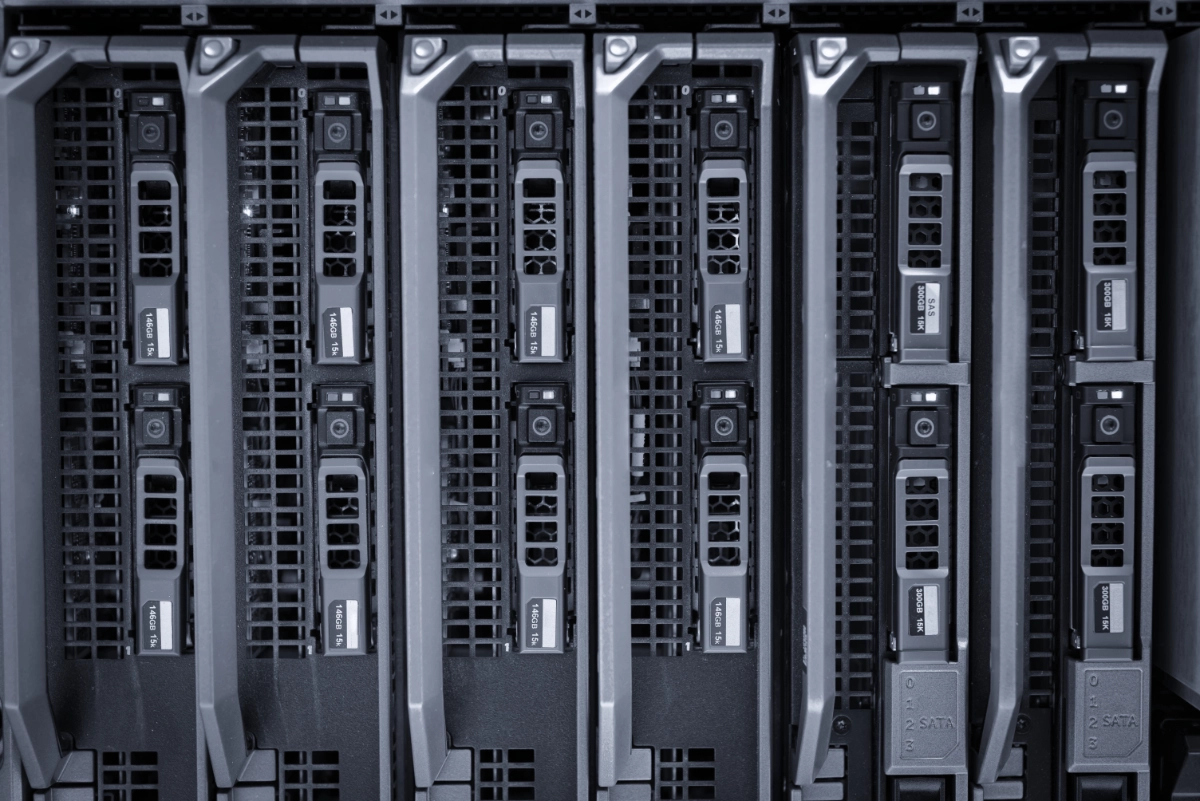Servers - On Premise Vs in the Cloud? - What powers your business?
Are cloud servers now viable?
For businesses today, when looking into costs and savings, a question always seems to pop up about whether it is now beneficial to have the IT infrastructure on cloud servers, rather than having it stored and ran locally on your own site. The ‘cloud’ is a relatively new concept to the IT world, that seems to be gradually becoming more and more common, with lots of software companies choosing to run their software fully or partially in the cloud, but is it right for your business and can you actually benefit from it?
The traditional approach was to host the server towers right there in the office, usually in a server cabinet or room, leaving it as secure as your business site is, and accessible by whoever is deemed able to access it, usually the Managed Service Providers or IT staff.
Since then, cloud computing has come out in force and it offers you easy access to remote servers over the internet. Where the physical hardware is stored off site and under a whole different company’s control, with your users on site just remotely connecting in or accessing the online cloud server.
So, which should your business pick?
Unfortunately, Finding Your Ideal Setup for your servers can be quite tricky and there certainly no ‘one-size-fits all’ solution. You really need to take into account how your business operates, what it requires to be able to run and to also evaluate key factors like your security needs, budgets, current standings and the growth plans for the future, and the specific technological requirements to find the most beneficial option for yourselves.
Let’s look at the options.
The classic on-premise (on site) servers. Having those physical machines on your own premises gives you total control over the hardware, software, and precious company data that is inside. It’s a hands-on approach that makes many businesses feel more secure knowing it’s all under their roof. With an on-premise tech setup, your team has full control over the actual hardware and systems.
Having easy access to your on-site server does allow for customization at your convenience and can provide a sense of security knowing your data never leaves the building. Some companies feel more at ease keeping their sensitive company data under their own lock and key with their servers completely under their control.
Unfortunately owning your own hardware on site doesn’t mean it comes cheap, power costs have risen dramatically over the last couple of years and servers are notoriously power hungry, needing to run (in most cases) 24/7!
Setting up an on-site server room is an upfront investment in equipment and maintenance, you’ll also need IT staff to install, maintain, and upgrade that tech over time. And if your needs expand down the road, upgrading can get complicated and pricey fast.

The future? Cloud Computing?
Then there’s the cloud option, a ‘new concept’ where your company’s tech needs are provided by an external service, which basically means not in a physical space you own, but on internet servers you rent from big providers. With the cloud, you can easily summon more power when required without being the one responsible for buying maintaining and setting up new hardware.
The cloud setup empowers new business ventures to be less ‘risky’, as you don’t need to upfront huge costs to start your online servers, you can just start them off and if things aren’t working out you can simply just stop your ‘subscription’ to the cloud services. This is GREAT for start-ups and businesses figuring out what they actually need. Some businesses may even use the cloud when they start up, until they can get established enough to provide their own IT and hardware on site!
This cloud model shifts costs from a major lump-sum purchase to a flexible, pay-as-you-go arrangement. Only pay for what you use each month. For start-ups or small businesses, that financial flexibility is a gamechanger.
So, no major investments, just rent what you need. But it’s important to remember that those monthly cloud charges can potentially add up over years, and you get ‘nothing’ physical at the end of it as such, so smart planning is key.
Cloud services also provide enhanced security measures and are designed to rapidly scale resources up or down as your needs fluctuate. No more space constraints or big downtime due to upgrade periods.
New doesn’t always mean better!
Although sadly, with the cloud model it isn’t all positives, you’re at the mercy of third-party cloud vendors, and while outages are rare from major hosting providers like AWS and Google Cloud they can still happen, and although they are usually extra tight on security you do cede some control over physical access and security protocols.
For some businesses dealing in highly sensitive data, that lack of oversight could mean you stick with on premise, despite the cloud’s benefits.
It’s important to also talk about the pricing models, they are VERY complex for the cloud servers, and rely on how much data is transferring over your servers, to the server and from the server, this can DRASTICALLY increase your costs and needs careful monitoring to ensure your costs do not sky rocket!
The pricing model is also at the mercy of the provider, therefore once your servers are up in the cloud the pricing can change at any moment and make a huge impact on your costings, (it’s not likely its going to go down either!)
Best of both – Balanced Approach
Some companies find it best to sit in the middle, keeping their most critical and sensitive operations on-premise while pushing less critical workloads to the cloud servers instead. This “hybrid” model blends the upsides of each approach and allows leveraging the cloud’s cost-efficiency while safeguarding any trade secrets or highly regulated data in-house. This can be great in terms of redundancy, keeping your operations going in case of an outage, but is generally quite an expensive method.
The Right Fit for You
At the end of the day, there’s no one-size-fits-all answer. Your business’s security needs, future growth goals, and budgets should drive this infrastructure decision.
At First Base Solutions, we understand these tricky IT infrastructure decisions can make or break an operation. Our team will work closely with you to analyse all angles and options available for you, to craft a tailored strategy – one that optimizes your tech investment while setting you up for sustainable success, whether primarily on-prem, cloud, or a hybrid model. We can guide you through assessing all your options and we’ll ensure your server is capable of handling your requirements as they stand, whilst also being future proofed and capable of still meeting your needs into the future.
Your technology choices are pivotal for security, efficiency, and maintaining a competitive edge. With expert guidance, you can find the perfect balance of cost, control, and capabilities for your business. With some professional IT insight, you will find the perfect fit.
Don’t forget to follow us on LinkedIn, and YouTube, for updates! Or click here to return to the Blog Page.

